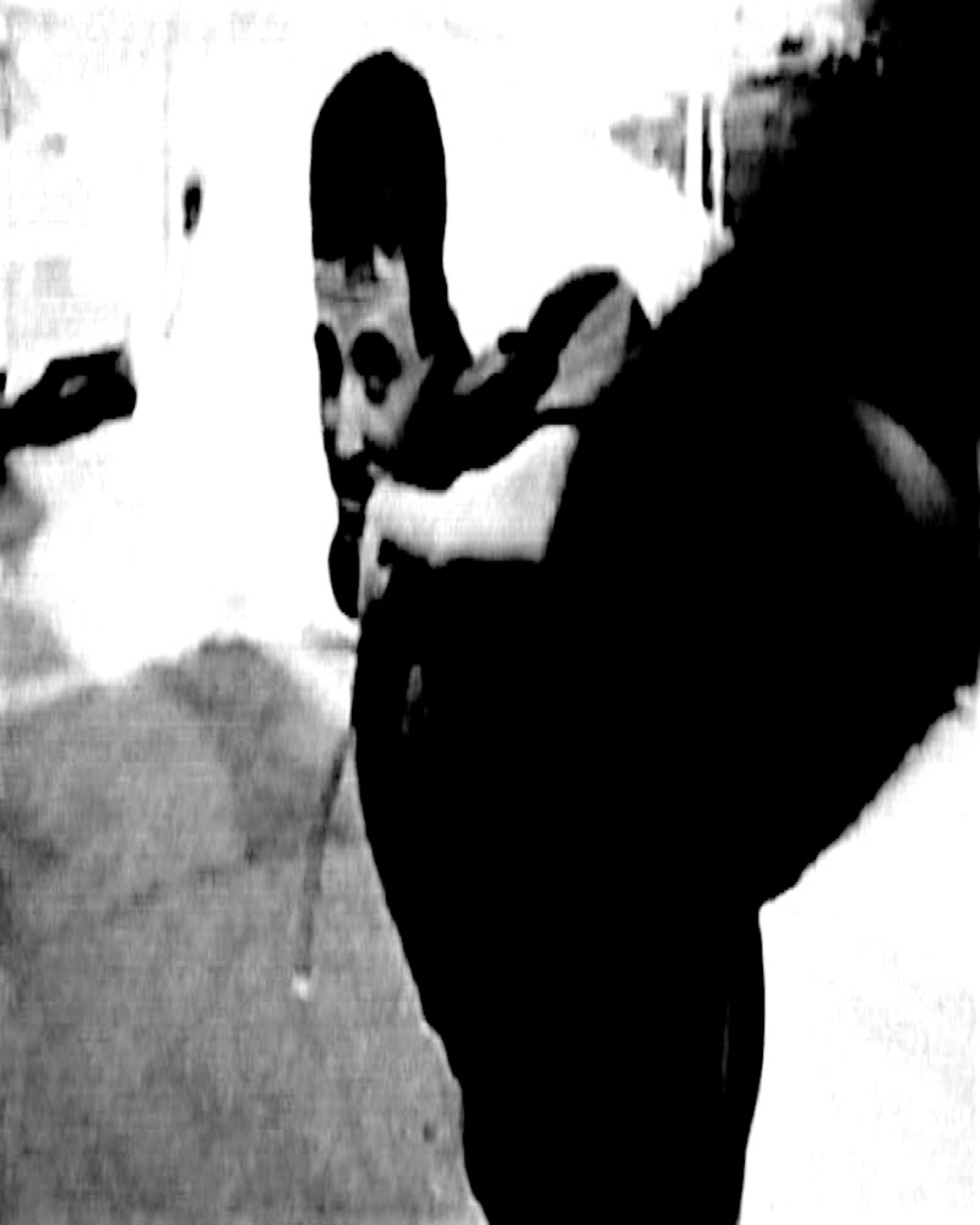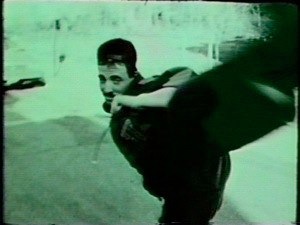Musical Selection
Black-Blue-White (Wang Chung)
[From the motion picture To Live And Die In L.A. (1985)]
[Chong Music Ltd., adm. by Warner-Tamerlane Publishing Corp. BMI.]
PRODUCTION NOTES
North Bergen, NJ; 1983:
Youssef meets John in their 6th grade class—and it is a less than cordial relationship. The former is nerdy and uptight. The latter…two steps away from juvenile delinquency.
Flash forward to 1986:
Youssef and John have become buddies—bound together by several high school classes they share, as well as a rowdy crowd in their 6th period lunchroom. Oh—and both teens are well-immersed in martial arts studies (Youssef practices Fu Jow [Tiger Claw] Kung-Fu while John practices Okinawan Karate).
Now flash forward to 1995:
Having graduated high school together, Youssef has already moved on to college (film school) and immersed himself in other martial arts styles (Okinawan Kempo, Karate, Aikido, the Ninja Black Arts, etc.) and John has earned his black belt—and is now teaching at his school when not earning his keep as a hard-working construction man and enjoying life as a new dad.
Preparing to do his thesis short film—an action yarn titled Once Upon A Time In Jersey —Youssef naturally turned to his best friend as the leading man with the lethal kicks! But before commencing on the grueling shoot, camera tests and film stock analyses have to be done.
Grabbing John and mutual buddy Eddie “Beetle” Manguel one Sunday afternoon in April, two rolls of Kodak 16mm B&W reversal film are spent in the effort to capture a talented martial artist at work. The footage is developed and edited on a Steenbeck 16mm film editing table and is deemed a successful test with exciting prospects for the short film to follow.
Jump ahead to the mid-2000s:
With the advent of digital non-linear editing systems, Youssef is able to import the test footage into his trusty Apple Mac G4 and not only re-edit the Shearstone footage via Final Cut Pro—but also color correct the 16mm transfer and successfully crop the original 1.37:1 (4x3) footage for a 1.78:1 (16x9) output. Please see below for comparisons.
Arriflex 16-S
Original 1.37:1 (4:3) film frame taken from a VHS interpositive. Reframed & anamorphically-enhanced 1.78:1 (16:9) digital frame.
The short video clip you saw is the end result of proper lensing, editing, color correction, aspect ratio alteration and soundtrack selection—all of which was performed by Youssef himself. And yes, both he and John are still great friends to this very day…although their legs may not reach the skies like they used to!
BACK
TO





























